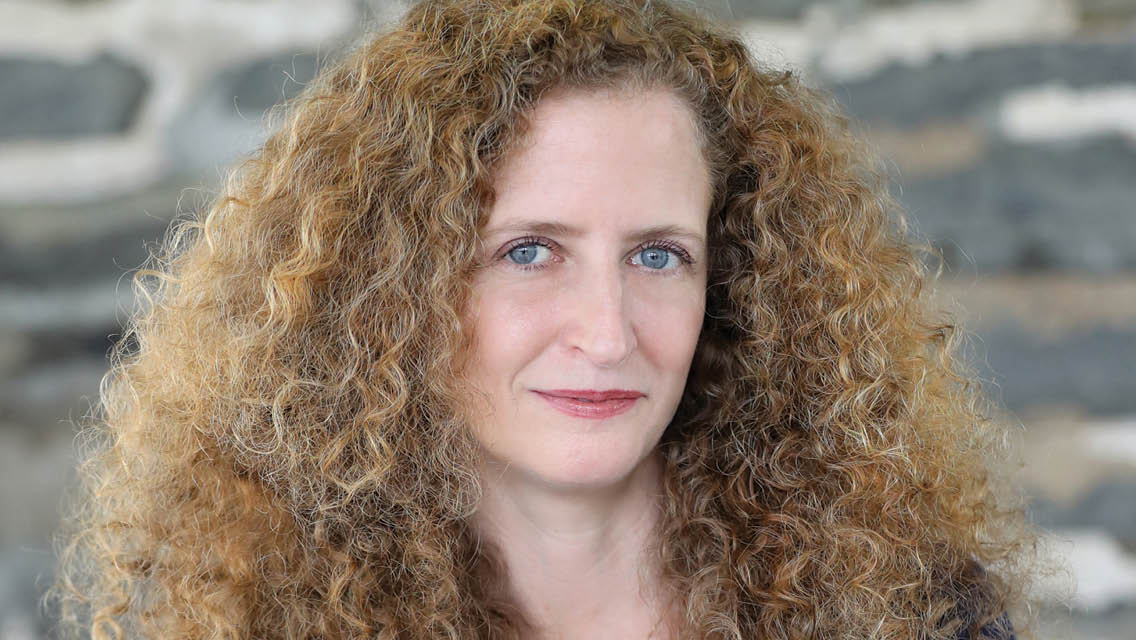It was 2006. I was 18 weeks pregnant, barely showing a baby bump, and walking around New York City with my new husband, Chris, when I felt an unusual pain in my lower belly. We canceled our plans for our day in the city and returned upstate to the Hudson Valley and our rickety old farmhouse, which Chris had recently inherited. I called my doctor, but the nurse dismissed my concerns and told me to wait for my scheduled appointment the next day, which I did.
The exam was going well until a look of concern spread across my doctor’s face and I was rushed to an emergency sonogram. It revealed that three huge fibroids were competing for space with my baby. One of them was pressing against my cervix and causing early effacement — changes that don’t usually happen until shortly before birth.
The doctor turned to me and said, “You’ll be lucky if your baby makes it to 24 weeks.” Then she labeled me high-risk, which meant that there were potential complications that could harm me and my unborn baby.
By the end of the appointment, the doctor’s message was clear: Go to bed and stay there until the baby starts to crown.
I was 32, and this was our first child; it felt like our world had come crashing down.
Flight Risk
The next day, my husband and I confirmed the diagnosis with a specialist. Then we picked up grilled-cheese sandwiches, my last meal of freedom, and headed home.
After we finished our lunch, my husband kissed me goodbye and left to sign the papers on a new power-equipment business we had just purchased. We had sunk every bit of our money into this shop, and now I was suddenly unable to help.
As I pulled back the sheets of my bed, I paused. Was I really going to do this? For five months? I’d never stuck with anything that long.
In first grade, I dropped out of Brownie Girl Scouts, and I’d been dropping out of things ever since: Hebrew school, the first out-of-state college I attended, even my job at a publishing company. But now I had no place to run.
What would happen if I refused to commit to bed rest? Would I lose my baby? What was I willing to risk? With nothing else to do, I slipped into bed. I would try it and see what happened.
Every hour of every day, I fought the urge to throw back the sheets and flee. My husband marveled that I’d embraced bed rest so quickly — that I was casting aside my own needs for our unborn child’s. But no one knew how much I was struggling inside.
“My husband marveled that I’d embraced bed rest so quickly — that I was casting aside my own needs for our unborn child’s. But no one knew how much I was struggling inside.”
I tried to distract myself with freelance work as a writer and editor, but I couldn’t focus. I began slipping into a darkness I later learned was prenatal depression.
Even meals were difficult. My husband packed a cooler by my bed every morning with cheese, nuts, and vegetables. I timed my bathroom breaks; I was allowed one two-minute shower each day. I felt trapped in my own home and in a body that continuously betrayed me.
It wasn’t easy for Chris, either. Not only was he taking care of a bedridden wife and a new business, but our farmhouse desperately needed repairs and we were drowning in debt. Our marriage was so new that we hadn’t yet developed the foundation necessary to handle these seismic changes. As the house began to crumble from neglect, so did our relationship. My desire to leave intensified.
Finally, I’d had enough. By the time I’d been on bed rest for 14 weeks, Chris and I had stopped communicating. I was alone for 12 hours a day, and I hardly saw another human being besides the doctor. The loneliness was unbearable.
So I ran away. I fled to Brooklyn, to the safety of my mother’s apartment.
While I was there, my mother nurtured me in a way that I hadn’t realized I needed. As I reclined on her sofa, visiting with old friends, listening to the familiar sounds of the city outside her window, eating comfort food she had painstakingly prepared, I thought back to my childhood.
My father struggled with depression and didn’t work for years at a time. Finances were always a source of contention in my parents’ marriage. My mother could have left, but she didn’t. She did what she had always done: take care of her family. She was doing that right now. I gradually realized it was my turn to take care of my own.
After almost two weeks in Brooklyn, I told Chris I was coming home. I hoped with this newfound commitment our problems would dissolve, but we had so much to discuss, so much to sort out, and I knew it would take time.
Building a Family
Our son was born healthy, on his due date, after 36 hours of labor and an emergency C-section. But just because my baby was outside my body didn’t mean everything was suddenly fine.

There were days I wasn’t sure how I would survive motherhood. Sometimes I would get into my car to go to the grocery store by myself and imagine what it would be like to just keep driving. Being a new mother felt almost as isolating as being on bed rest.
But then I would remind myself that I was strong, that I’d been through so much, and that I could do hard things. I found support and solidarity from other moms when I joined a local parenting group.
I took it day by day, sometimes hour by hour. I found solace in small moments — in the sweet scent of the baby’s skin, the fresh air filling my lungs on walks in the woods.
Chris was getting used to our new business and wasn’t home much, but we survived and, slowly, we healed. We began talking more, spending time together. We found a babysitter, and we made a standing date for Monday-night dinner and a movie. We went on long hikes every weekend with our baby and our dog.
In this way, we reconnected. We had some pretty tough conversations, too, about what we hoped to change and how we could find ways to support each other. (Want to deepen your connection with your partner? Explore the conversation templates from two relationship experts at “5 Essential Conversations for Any Couple“.)
Today, our son is 15 years old and an amazing athlete. Chris and I understand each other in ways we had yet to discover so early in our marriage. We’ve both learned that marriage takes work; it’s about being present and listening and responding to the other person’s needs.
I still occasionally feel the urge to run away when life gets messy, but I have the tools to work through those feelings. I take time for myself, slow down, book a family vacation, or simply take a walk.
Sometimes I sit down at my desk and write. That is how my book Knocked Down: A High-Risk Memoir was born. By writing my story, I have been able to release the trauma I experienced on bed rest, giving it light and space in the world, and, I hope, allowing other women to understand that they deserve to be seen and heard.
My high-risk pregnancy and my early struggles with motherhood helped me understand what it means to stay and fight for the things that matter most, which is a lesson I’ll carry with me forever.
Aileen’s Top 3 Success Strategies
1. Be kind to yourself. Nurture your mind and body the way you would nurture a loved one. This can be as simple as recharging by taking a walk or a bath or reading a book you enjoy.
2. Advocate for your needs. Find healthcare professionals who see and hear you. Ensure they take your concerns seriously. If you don’t feel you’re getting proper care, speak up or change doctors.
3. Ask for support. Step back, acknowledge your limitations, and normalize reaching out and asking for help when you need it. (See “How to Ask for Help” if this a challenge for you.)
Tell Us Your Story! Have a transformational healthy-living tale of your own? Share it with us!
This article originally appeared as “Best-Laid Plans” in the July/August 2022 issue of Experience Life.




This Post Has 0 Comments